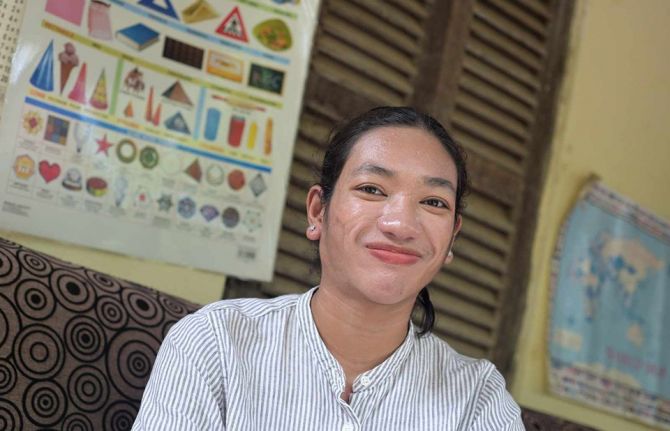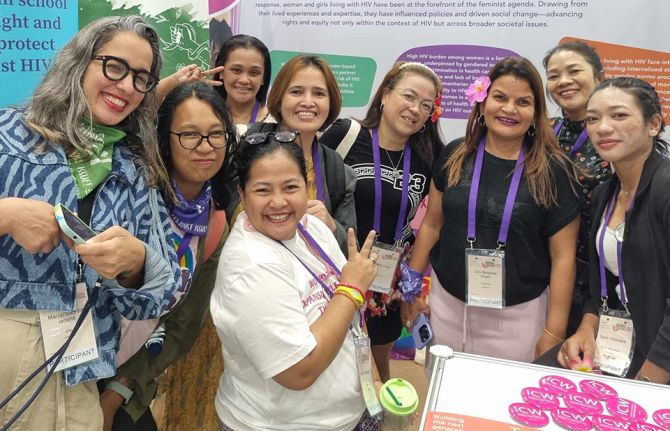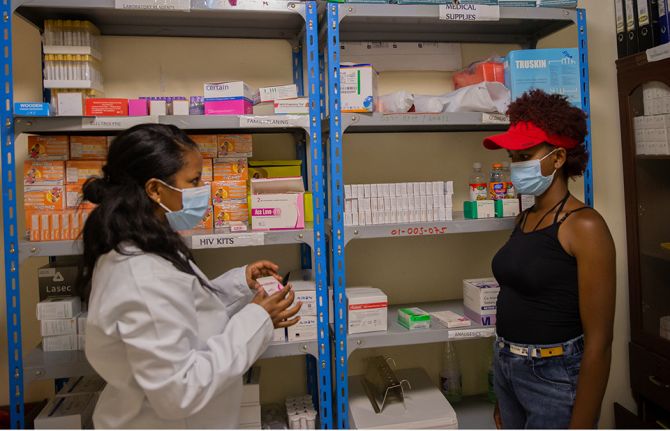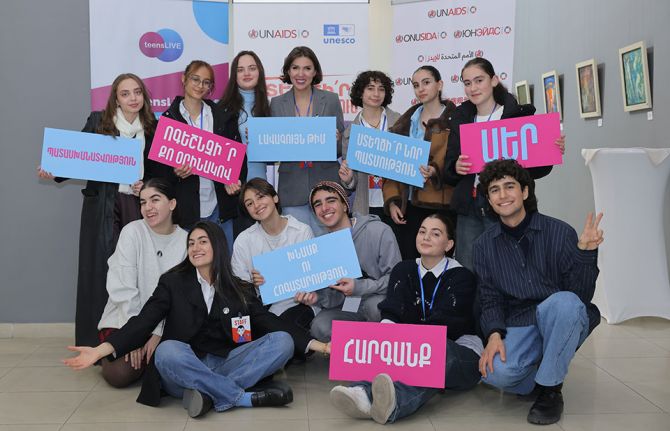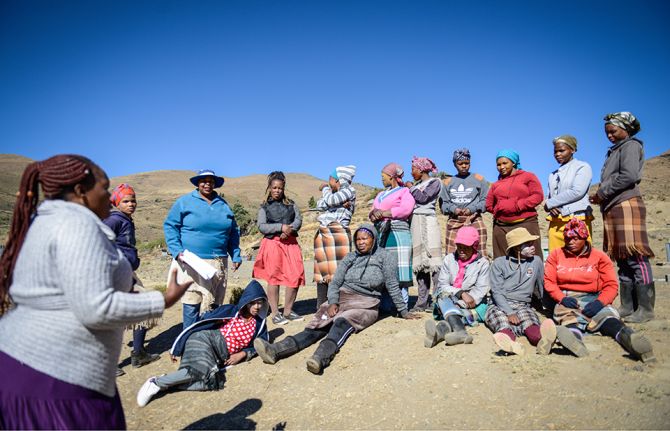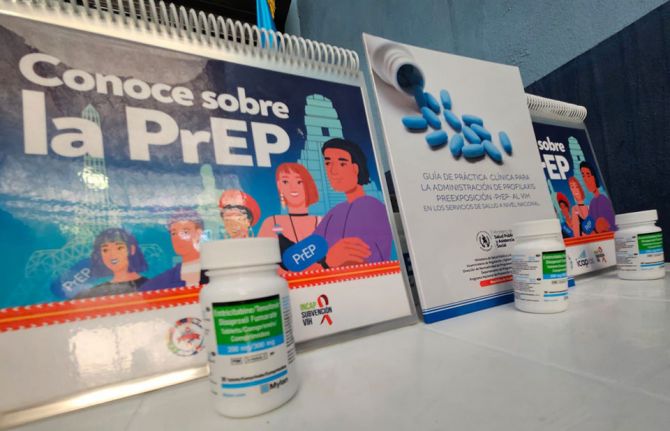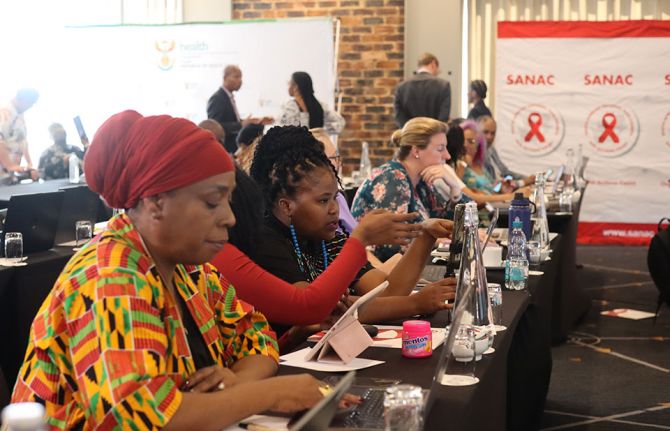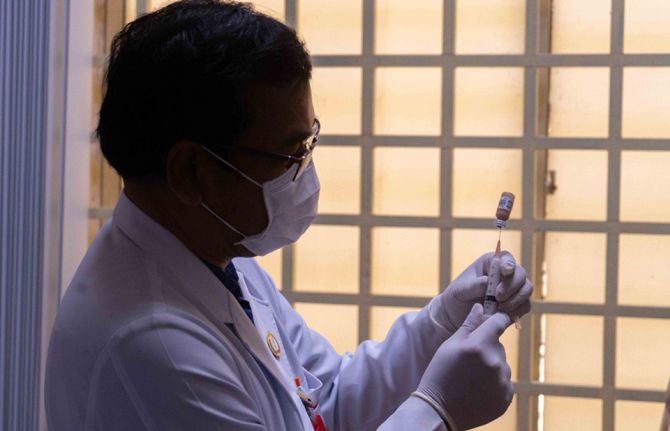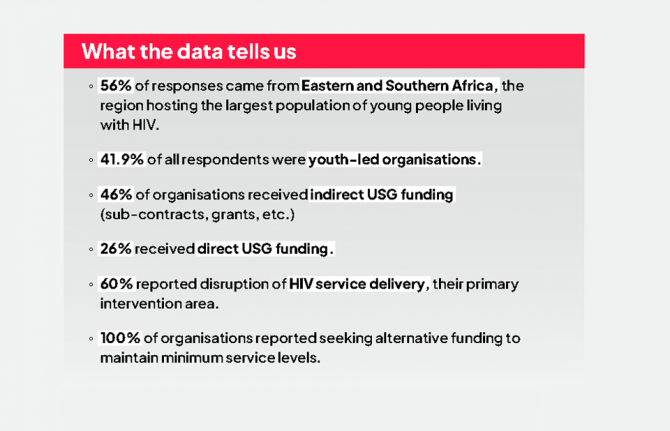
Update
Children, adolescent girls and young women: preventing new HIV infections
10 June 2016
10 June 2016 10 June 2016Adolescent girls and young women are disproportionately affected by HIV. Of new infections among adolescents and young people aged 10–24 years, 65% are among adolescent girls and young women aged 10–24 globally. Much more needs to be done to promote prevention programmes based on gender equality, fulfilling sexual and reproductive rights and guaranteeing access to services for this key group, according to a panel meeting entitled “Children, adolescent girls and young women: preventing new HIV infections”.
There is little time to lose in addressing this situation. In 2015, nearly 390 000 [330 000–560 000] adolescent girls and young women aged 10–24 became newly infected with HIV globally, the vast majority of whom lived in southern Africa. In many countries in Africa, young women are more than twice as likely to acquire HIV as their male peers.
The panel, which met on 10 June at the United Nations General Assembly High-Level Meeting on Ending AIDS, taking place in New York, United States of America from 8 to 10 June, explored ways of empowering adolescent girls and young women to claim their rights, creating an environment where they can live free from discrimination and violence. This is seen as critical because the risk of acquiring HIV tends to be associated with gender inequalities and norms that reinforce these inequalities, such as gender-based violence, lack of secondary education, early or forced marriage and lack of choice about how and with whom to have sex.
Children were also the focus of the discussion given that despite a considerable drop in the number being infected with HIV, 150 000 [110 000–190 000] children acquired the virus in 2015. Only half of all children living with HIV had access to treatment in that year. The panel argued that more attention should be paid to tackling barriers to accessing services, greater uptake should be encouraged and the treatment gap should be closed.
Young women should be meaningfully involved in developing policies and programmes and should have access to comprehensive sexuality education and high-quality sexual and reproductive health services, the panel noted. The structural causes of inequality need to be addressed and boys and men must also play a key role in promoting gender equality and preventing gender-based violence. In addition, more effective monitoring systems that can follow children and young people diagnosed with HIV and facilitate access to treatment and care were considered necessary.
Such programmes would help place children and adolescent girls and young women where they belong—at the core of the AIDS response.
Quotes
When I was diagnosed with HIV, I never dreamed I'd tell anyone. Now I tell the world. The support of strong women made this possible"
“Young women and adolescent girls must have access to sexual and reproductive health services, including HIV prevention services"
“We need to be bold and courageous to take action. We have to invest in women and girls. We have to empower, educate and employ them because it’s the right thing to do and also the smart thing to do for sustainable development.”
“We now need to focus on generating stronger commitments to better health outcomes for children living with HIV and women’s and girls’ empowerment as an essential part of the HIV response, to rapidly scaling up combination HIV prevention programmes among young women and girls, linking HIV responses to efforts to advance other Sustainable Development Goals and mobilizing the resources required.”

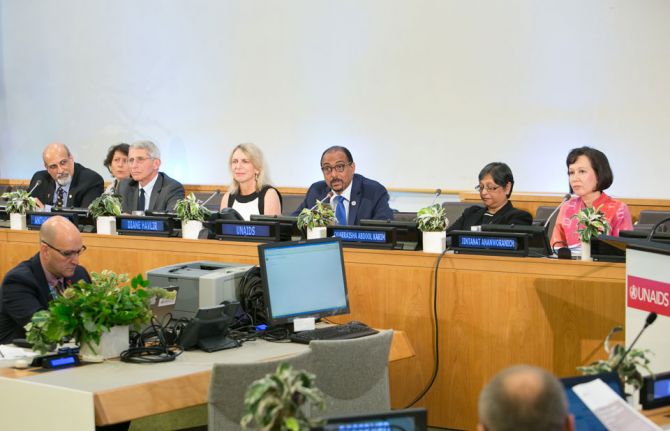
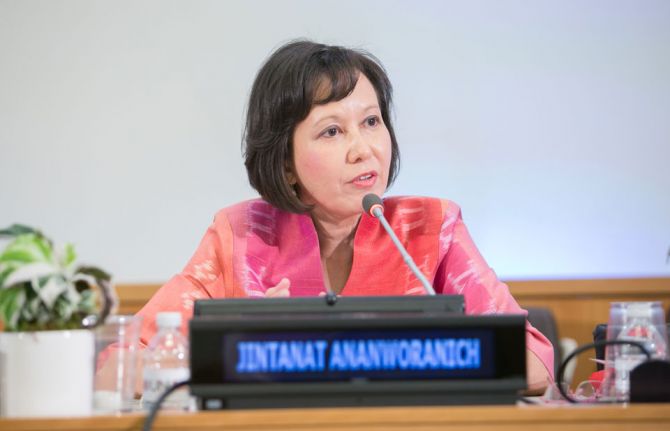
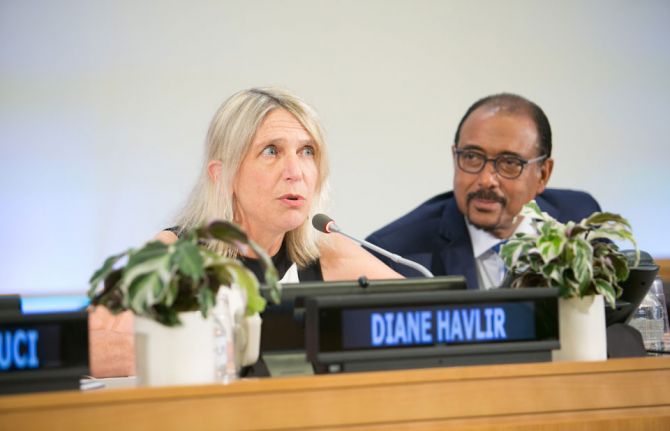
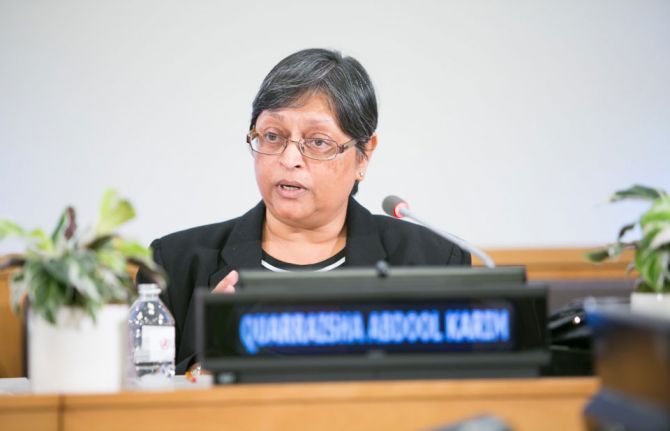
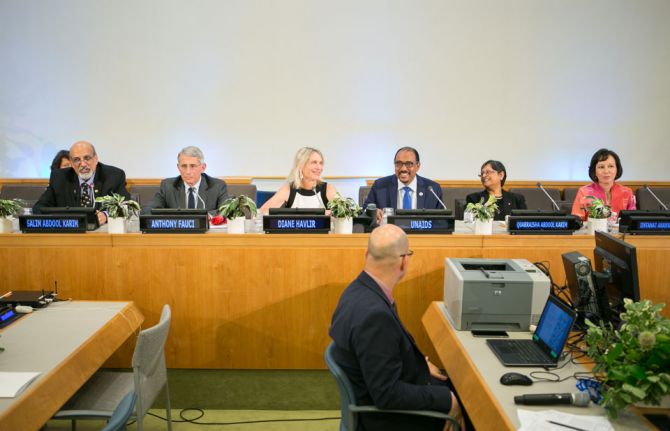
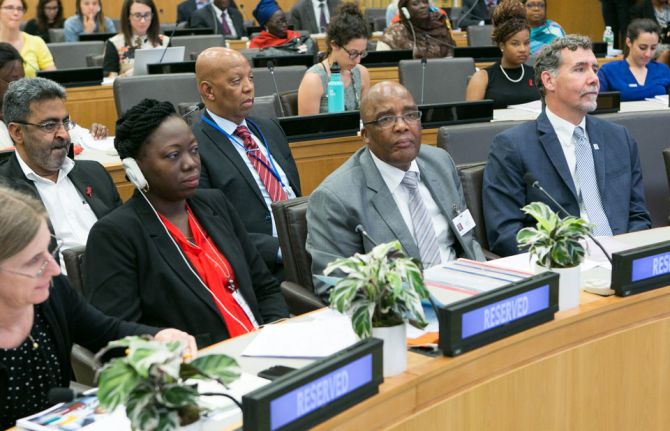
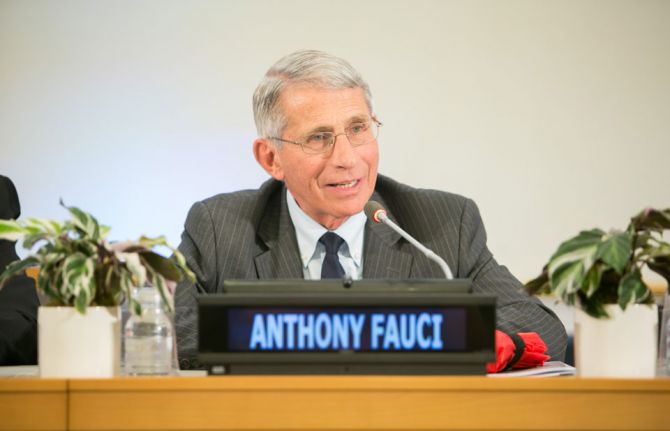
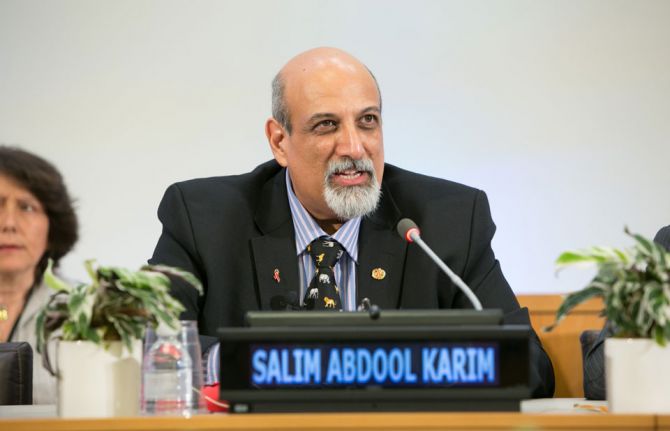
Update
The end of AIDS as a global health threat: science-based or science fiction?
07 June 2016
07 June 2016 07 June 2016Scientific progress will be essential to end the AIDS epidemic by 2030, according to participants at a side event held on the margins of the United Nations General Assembly High-Level Meeting on Ending AIDS, taking place in New York, United States of America, from 8 to 10 June.
The side event, held on 7 June, was entitled “The end of AIDS as a global health threat: science-based or science fiction?” It highlighted many of the successes achieved in treating and preventing the transmission of HIV as well as the remarkable progress made in only 35 years in understanding the virus.
The event was an opportunity to showcase anticipated scientific progress to underpin the Fast-Track vision. Participants presented ways in which research has been fundamental in shaping effective programmes and discussed whether current technologies can enable countries to reach a point where the AIDS epidemic is no longer a public health threat. Prevention, treatment, vaccines and a cure were all considered and it was concluded that the results of future research in all these domains, linked with current knowledge and behavioural and structural interventions, would be needed to achieve the end of AIDS.
There was stimulating and grounded discussion around the scientific results still required and the imperative to prioritize evidence-informed implementation of the results if AIDS is to be ended by 2030. In most regions of the world, progress has been made, since people living with HIV are living longer, but the number of new HIV infections is no longer decreasing and it was argued that the pace of any progress remains too slow.
The meeting heard that efforts were being made to reach people who might be left behind with treatment and prevention, but that these efforts were neither sufficiently supported nor appropriately ambitious. Success, it was claimed, will come through advancing science and using evidence-informed programmes to “do the right things at the right place, for the right people and in the right way.”
Quotes
Ending AIDS is our aspirational goal. On the road to getting there, we have set a benchmark: to end it as a public health threat. To reach a point where HIV incidence is systematically decreasing and efforts that have been put into place are bearing fruit.
The history of the HIV response has been rooted in taking scientific results and telescoping the time to putting them into action. Studying their implementation leads to more questions which have been quickly picked up by the research community. We can be optimistic that this rapid feedback loop will continue to enhance the relevant research and action to end the HIV epidemic.
What will ultimately end this epidemic is science. Science systematically takes us on a path to the end of AIDS. It is time to strengthen efforts against stigma and discrimination, to bring together everything we are learning and link it with behavioural and structural programmes.
The science that has been achieved over the past 35 years has been nothing short of breathtaking. We now have 17 million people receiving lifesaving therapy, yet we still need to do much better. No more excuses, we have the tools to end the epidemic: it is up to us to do it.
Related information
Find out more about the #HLM2016AIDS
Related

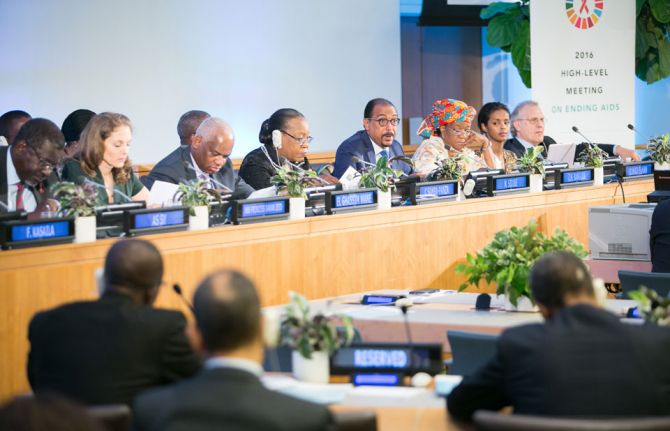
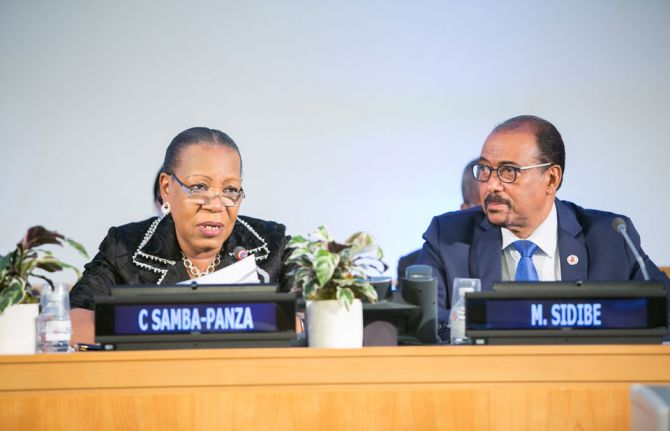
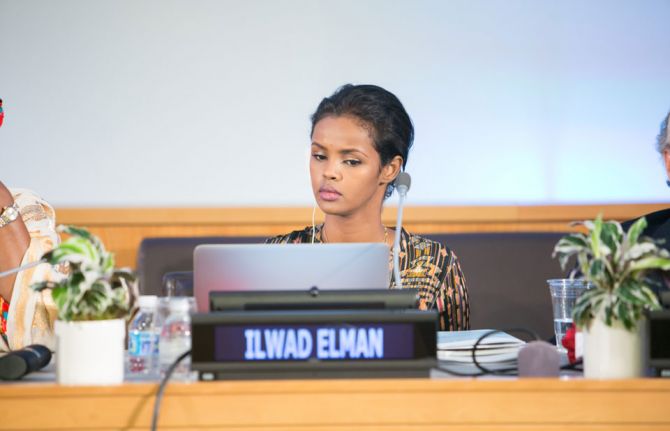
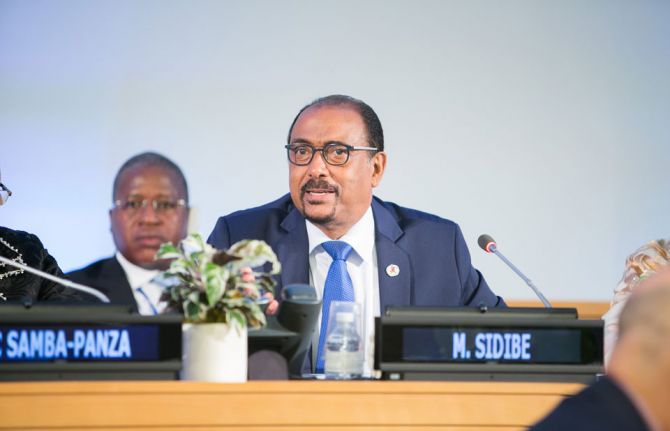
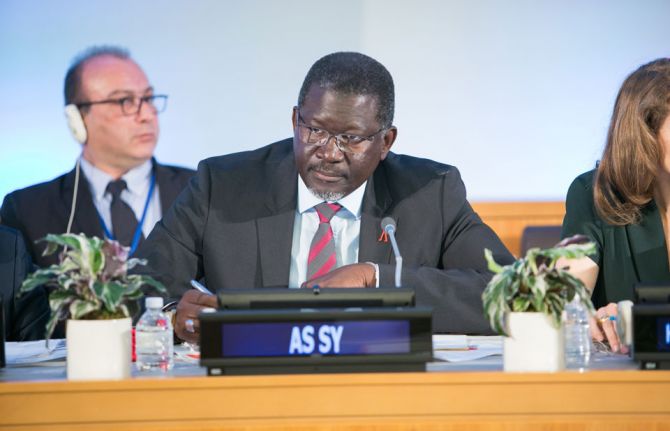
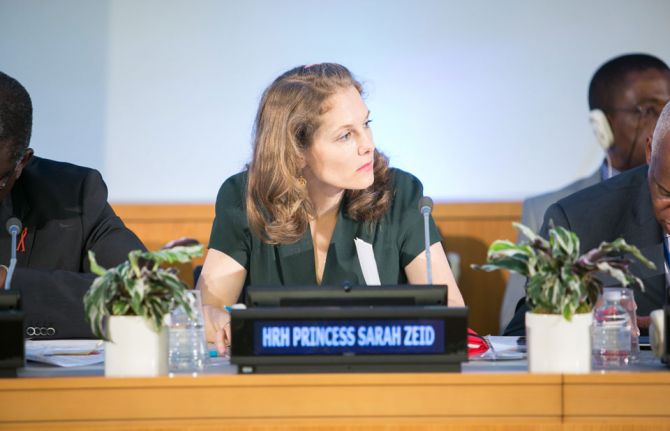
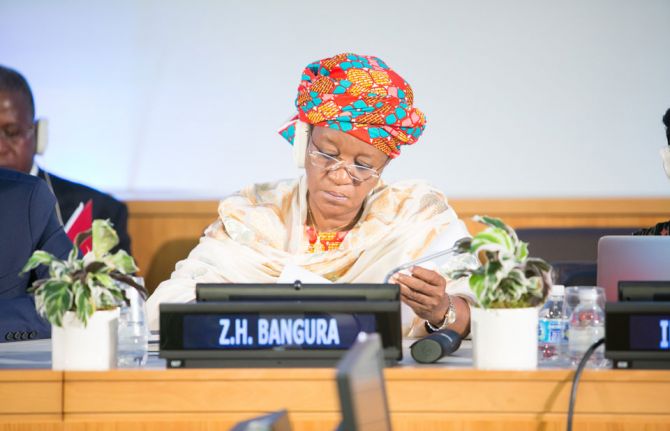
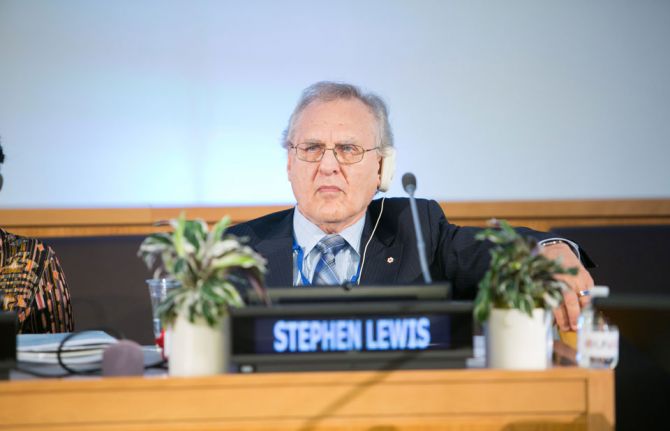
Update
HIV and security: past, present and future
07 June 2016
07 June 2016 07 June 2016If we do not address HIV among populations affected by conflict, natural disasters and emergencies, we will not see the end of the HIV epidemic by 2030. This was the stark message from leaders at a major side event taking place on the margins of the United Nations General Assembly High-Level Meeting on Ending AIDS, being held in New York, United States of America, from 8 to 10 June.
Entitled “HIV and security: past, present and future,” the event was moderated by journalist Colette Braeckman, who was joined by a panel of eminent experts. The event was organized by UNAIDS and the United Nations Department of Peacekeeping Operations and was attended by the UNAIDS Executive Director, Michel Sidibé.
In setting the scene, Mr Sidibé noted that of the 314 million people affected by emergencies and conflicts in 2013, some 1.7 million were living with HIV. It was, he argued, vital not to leave behind in the response to HIV people living with HIV and people vulnerable to human rights violations and sexual exploitation.
The participants explored exactly how and why people may become more vulnerable to HIV in emergencies and conflict situations. Women and girls especially are at risk of assault and violence every day, even in the very camps and settlements where they seek refuge. Access to HIV prevention and treatment services can be disrupted, and traditional social networks and behaviours often break down during times of crisis, increasing the vulnerability of women and girls to sexual violence and HIV. Members of key populations and young people may also be exposed to HIV through higher-risk behaviours in emergency and conflict situations.
Panellists underscored the need for renewed urgent attention to HIV, security and sexual violence in conflict settings, recalling the adoption of UN Security Council Resolution 1983 five years ago. HIV and security is unfinished business, requiring the urgent attention of the Security Council. Panellists called for the urgent elimination of all forms of sexual abuse and exploitation in UN peacekeeping missions, increased accountability for abuses, and comprehensive support to victims. UN missions and troop-contributing countries have a duty of care to the communities they serve. Upholding this duty requires a culture shift in security and military institutions.
Looking to the future, national responses need to increase strategic information on the drivers of HIV risk and vulnerability in humanitarian crises to enable resources to be targeted effectively. It was argued that well-coordinated HIV programmes should be routinely incorporated into all emergency and post-conflict preparedness and humanitarian response programmes, with cross-border and regional collaboration a priority. In addition, people living with HIV and members of key populations must be included in the development of policies and plans related to the continuity of treatment and access to HIV services. It was emphasized that peacekeeping operations should also play a key role in the HIV response in such settings and help address HIV risk factors.
One of the fundamental recommendations highlighted was the need to have plans in place to deal with the possible impact of conflict and emergencies before such situations arise. Helping to build community resilience to potential traumas so that their effect can be mitigated is essential.
Most crucially, long-term, flexible and sufficient funding must be identified to address the sexual and reproductive health needs of adolescents and young women in humanitarian and fragile settings. Without intensified and fully-resourced humanitarian response, the world will not reach the growing numbers of people affected by displacement, conflict and violence and we will not be in a position to end AIDS by 2030.
Quotes
"Humanitarian crises exacerbate the HIV epidemic. Millions of people are left behind, vulnerabilities increase, rape is used as weapon of war and violence leads to new infections. Services are disrupted, people are uprooted, their access to HIV prevention and treatment affected."
"The people most affected by conflict and humanitarian emergencies have to shape programmes. They are more than “implementing partners”. Limiting them to this role is a missed opportunity."
"We must do far more, and we must do it better, if we are to meet the needs of women and children in fragile settings. We can end this horror, but not if we persist with business-as-usual approaches."
"There are glaring gaps between international standards and the national laws that trivialize women’s traumas, or conflate crime with adultery or other issues. Women are seeking justice in its fullest sense – services, reparation and redress, not just punishment for the perpetrators. We must change the culture of security, military and justice institutions. Structural reparations mean that the dividends of peace and justice flow to all."
"We need to provide adequate pre-deployment training on HIV and HIV programming for peacekeepers in conflict settings."
Related

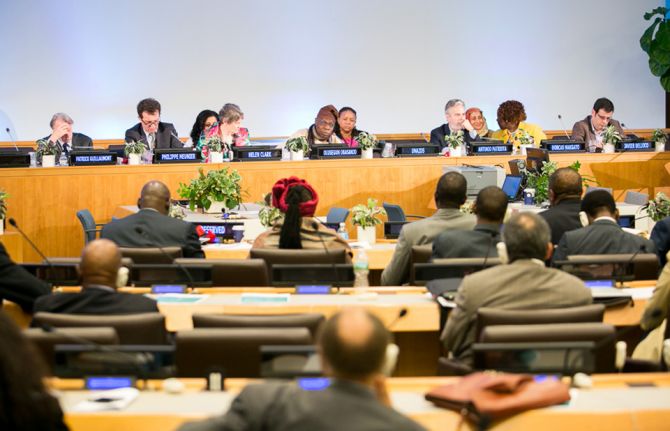
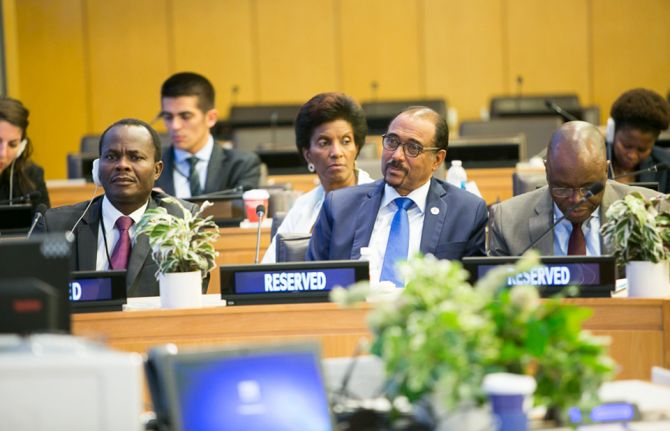
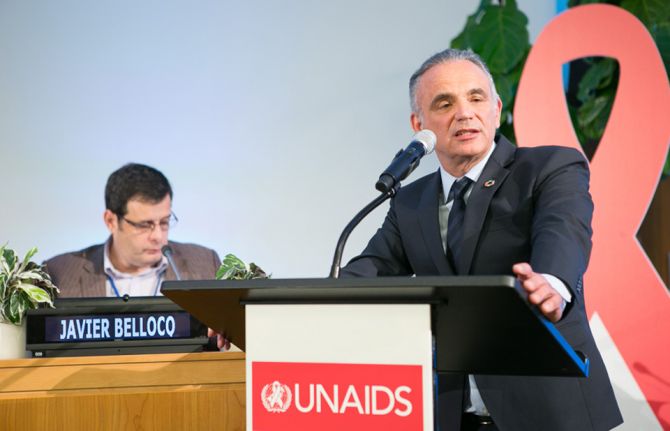
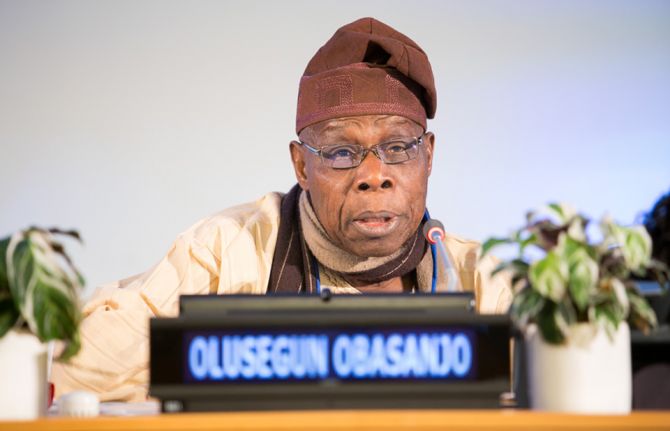
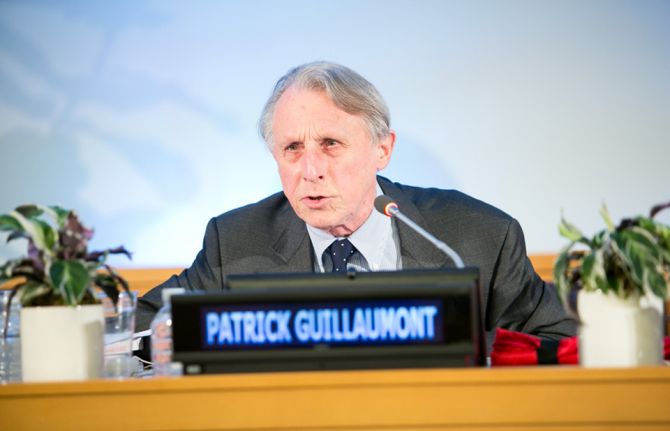
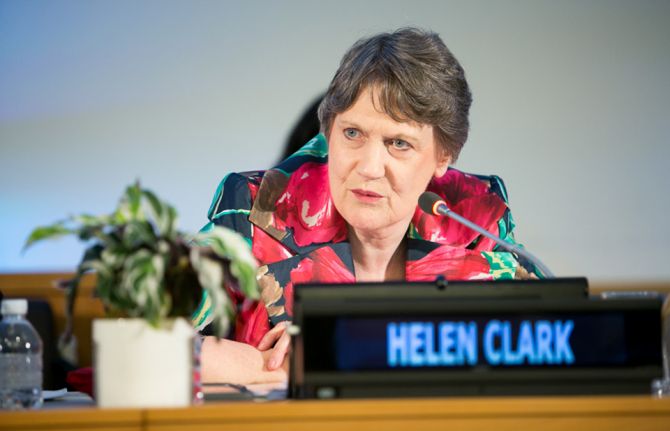
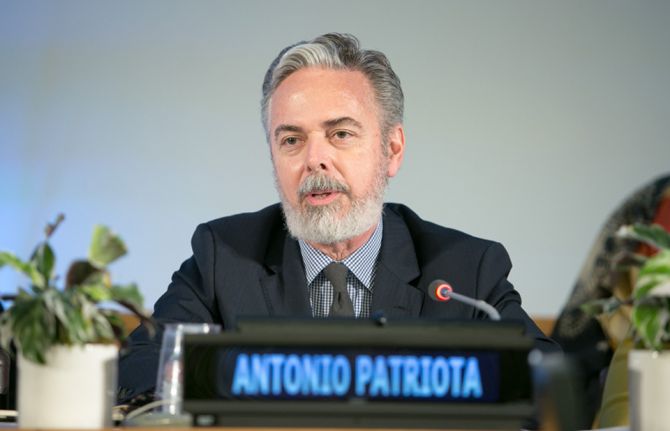
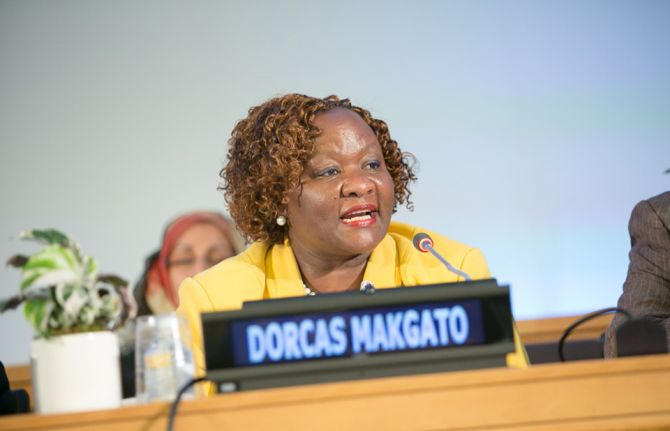
Update
Financing vulnerabilities
07 June 2016
07 June 2016 07 June 2016Olusegun Obasanjo, former President of Nigeria and Champion for an AIDS-Free Generation in Africa, chaired a discussion at a side event entitled “Financing vulnerabilities” held on the margins of the United Nations General Assembly High-Level Meeting on Ending AIDS, taking place in New York, United States of America, from 8 to 10 June.
Joining Mr Obasanjo for the discussion were Helen Clark, the Administrator of the United Nations Development Programme, Patrick Guillaumont, the President of the Foundation for International Development Study and Research, Dorcas Makgato, Minister of Health of Botswana, Javier Bellocq, from the International HIV/AIDS Alliance, Antonio Patriota, Ambassador of Brazil to the United Nations, and Philippe Meunier, the French Global AIDS Ambassador.
This panel, moderated by Luiz Loures, UNAIDS Deputy Executive Director, focused on financing vulnerabilities and explored mechanisms to ensure that fragile communities are at the centre of the global public health agenda. Ensuring that the health of fragile communities is secured, at a time when new epidemics and health issues threaten to further increase the vulnerability of low- and middle-income countries, was also discussed, and the panel explored the social and economic risks of the most vulnerable people.
It was noted that a majority of the world’s poor live in middle-income countries and that equity is essential in the determination of funding allocations. A strong call was made for new commitment and innovations to meet the needs of key populations, including sex workers, men who have sex with men, injecting drug users, transgender people and prisoners, and people living with HIV.
Mr Obasanjo recalled the beginnings of the establishment of the Global Fund to Fight AIDS, Tuberculosis and Malaria, as well as the establishment of the United States President’s Emergency Plan for AIDS Relief, at a time when very little funding was available. Today, Africa funds 55% of HIV treatment from domestic budgets. Mr Obasanjo emphasized the need for continued commitment to end the AIDS epidemic, both from domestic and international resources.
Quotes
“I hope the United Nations General Assembly High-Level Meeting on Ending AIDS will result in an action plan for ending AIDS by 2030.”
“We've made a lot of progress, but we need to institutionalize financing for civil society and key populations.”
“Addressing vulnerabilities must not be at the periphery of the AIDS response. It must be at the centre and it must be funded.”
“The issues of women, girls and youth, including violence against women and intimate partner violence, are critical for the United Nations General Assembly High-Level Meeting on Ending AIDS.”
“If we don't end stigma, discrimination and inequality, we won't end AIDS.”
“We need a global approach when it comes to vulnerabilities.”
“We have to innovate when it comes to financing. We must finance vulnerable groups.”
“If we are to end AIDS, people being left behind need to be placed at the centre of the response.”

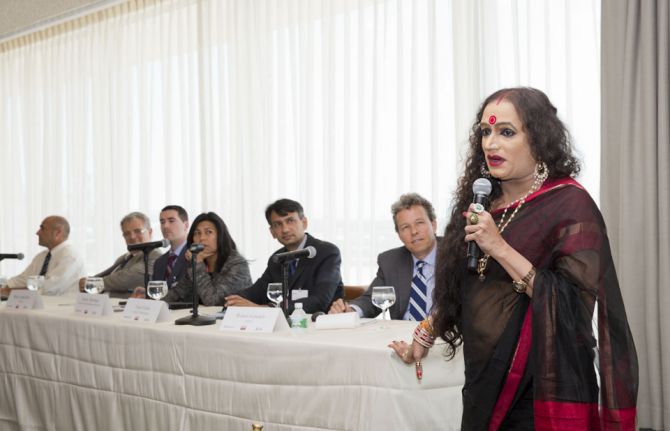

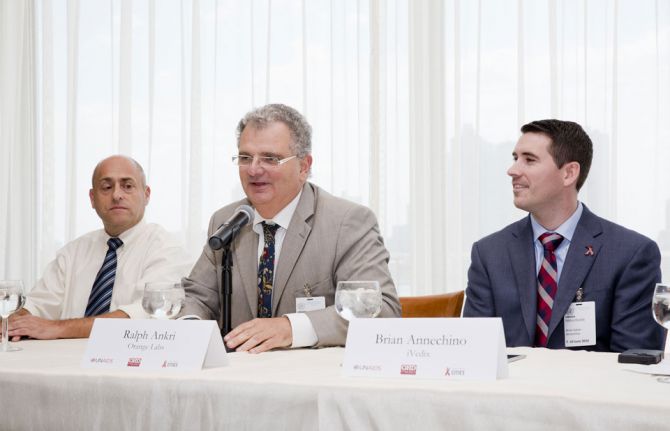
Update
City mayors, the private sector, governments and civil society share and display innovations in technology that transform the HIV response
07 June 2016
07 June 2016 07 June 2016On the eve of the United Nations General Assembly High-Level Meeting on Ending AIDS, mayors from global cities joined government representatives, the private sector and other stakeholders at the United Nations Headquarters in New York, United States of America, to discuss and showcase innovations in technology and financing for ending the AIDS epidemic by 2030.
The participants explored key challenges in city responses and offered innovative examples in information technology, mobile and data applications, pharmaceuticals, diagnostics and other scientific advancements for reaching “hard-to-reach” people with HIV prevention and treatment services. More than 20 innovators in the public, private and non-profit sectors presented their innovations in a hands-on marketplace for mayors, ministers, policy-makers and implementers. Innovations that were showcased included new cervical cancer diagnostics, smartphone applications, web-based dashboards and commodity delivery systems by drone.
Quotes
“The AIDS response can be described in two words: innovation and partnerships. Without innovation and partnerships we wouldn’t be where we are today in the AIDS response. Innovations in health allow us to democratize services and reach more people.”
“What we typically do is look to the private sector for resources, but that alone won’t cut it. We need to identify specific problems to be solved and then approach companies for direct solutions: show companies how they are the best one to solve a specific problem. A win–win situation!”
“The HIV epidemic has changed and we must change our way of communicating to people.”
“In our rural communities, accessibility is a huge challenge. Laboratories are only available in district hospitals. These new ways of delivering medications, laboratory results and other commodities are vital to keeping people with HIV alive and healthy.”


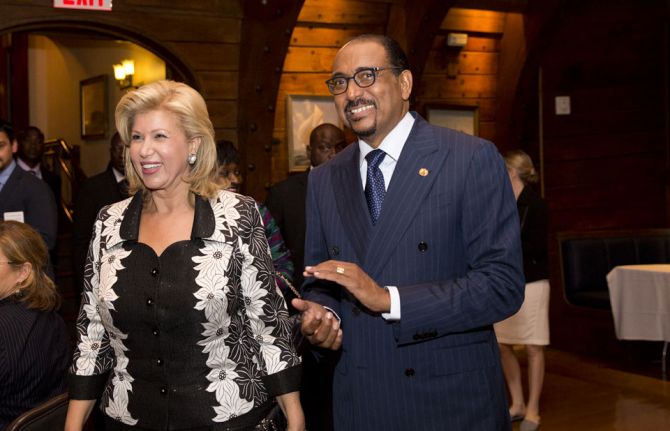
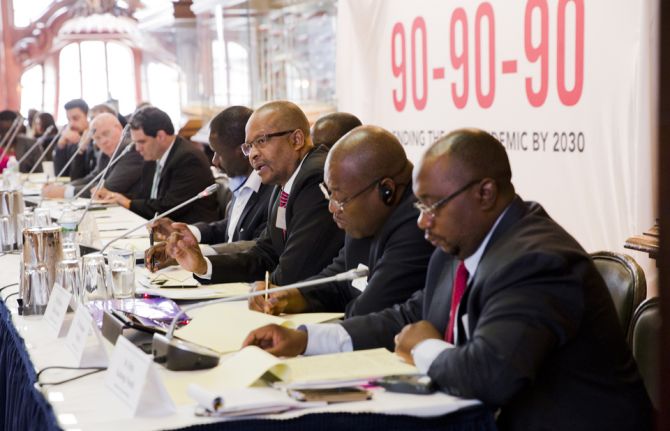
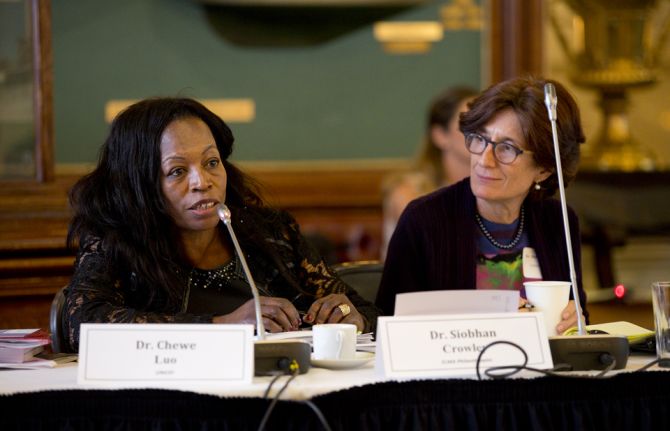
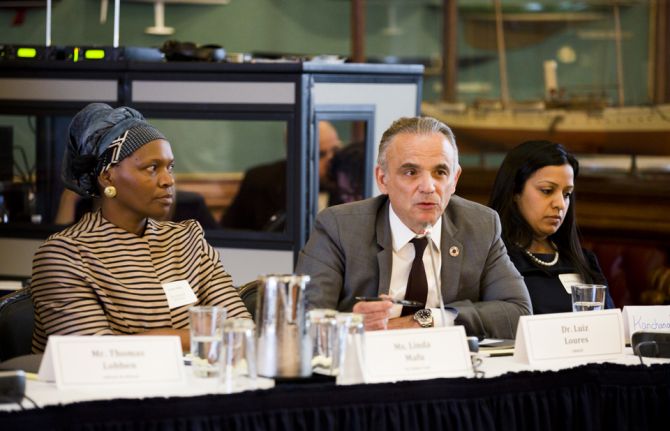
Update
Call issued for global partnership to end paediatric AIDS
06 June 2016
06 June 2016 06 June 2016African health ministers, leaders of paediatric HIV treatment programme implementers, philanthropic foundations, civil society and private sector partners convened in New York, United States of America, on 6 June to celebrate successes in closing HIV treatment gaps for children and to call for an expanded global partnership to build on this momentum to end paediatric AIDS.
Many countries have made important strides towards ending paediatric AIDS, but major challenges persist. Even as the number of children newly infected with HIV continues to decline, only about half of HIV-exposed children are tested for HIV within the first two months of life and only 30% of children living with HIV are linked to HIV treatment in a timely manner. Because far too many children living with HIV begin treatment too late, children are far more likely than adults living with HIV to die of AIDS-related illnesses.
At a major global ministerial meeting in Abidjan, Côte d’Ivoire, in May, health ministers from Africa endorsed a Fast-Track approach for children. This approach calls for reaching a 95% coverage of antiretroviral therapy for both pregnant women and children living with HIV by 2018. By reaching this target, the world could effectively end paediatric AIDS by 2020—one decade earlier than the elimination goal for the epidemic as a whole.
To reach these ambitious targets, attendees at this week’s meeting in New York emphasized the importance of a renewed, expanded, inclusive global partnership to close the paediatric HIV treatment gap. During an interactive conversation among the meeting participants, speakers emphasized the importance of involving families, communities and civil society organizations. There was also agreement regarding the need to engage the private sector in efforts to develop new paediatric treatment tools and fund programmes to close gaps across the continuum of care for children. The Medicines Patent Pool, which has prioritized paediatric HIV treatment in its negotiations of licences for the generic manufacture of priority antiretroviral medicines, is an example of how innovative approaches to private sector involvement can contribute to improved access to essential treatments.
Meeting attendees stressed the need for improved coordination of the many efforts being undertaken to address various aspects of paediatric HIV treatment. At the Abidjan meeting, health ministers endorsed efforts to maximize coordination in the paediatric AIDS arena.
To achieve the Fast-Track Targets for children—and to sustain these gains over time—new resources will be needed. Several countries are taking steps to increase domestic allocations for paediatric HIV treatment. Namibia, for example, covers 60% of its national AIDS response with domestic resources, and Felix Kabange Numbi, Minister of Public Health for the Democratic Republic of the Congo, reported that his country is pledging to increase domestic resources for AIDS.
It was agreed that philanthropy offers a potentially important avenue to generate new resources for paediatric HIV treatment. ELMA Philanthropies, for example, is allocating US$ 12.5–15 million per year for at least the next three years to support HIV treatment programmes for children, with a comparable amount to be invested in supportive programmes for childhood development.
Quotes
"We must build on our momentum to finally end the AIDS epidemic once and for all. The outcomes across the continuum of care for children need to be strengthened."
“We need a new solidarity. We need a new movement that focuses on ending paediatric AIDS. This new movement is about ending inequities, it is about social justice.”
“One person, one country, one company can change the world. I know we are going to reach our global goals for ending paediatric AIDS.”
“There is no mystery about what we need to do. We need a resurgence of political will and to zero in on reaching the mothers, infants, children and adolescents who are being left behind.”
“It is unacceptable to deny children their right to a chance at life. If we fail to build on recent momentum in order to end paediatric AIDS, both history and the world’s children should judge us harshly.”
“We need more consistent communication among partners working on paediatric HIV treatment, and our sense of accountability needs to be aligned so that it is fit for our objective to end paediatric AIDS.”
“Governments can do many things well, but there are some things we don’t always do well. We can look to our private sector partners for the introduction of new technologies and for better ways to hold ourselves accountable.”
Related

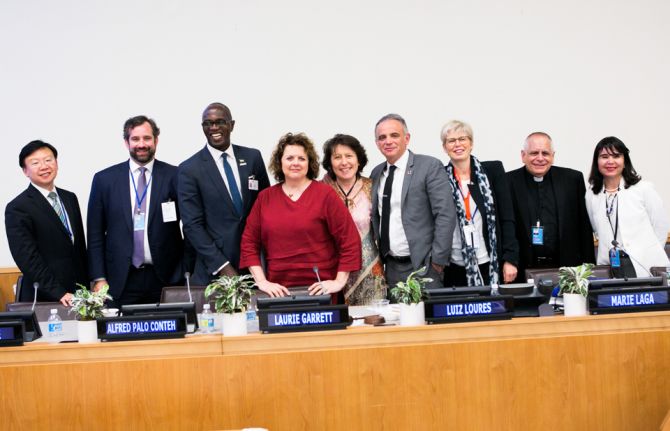
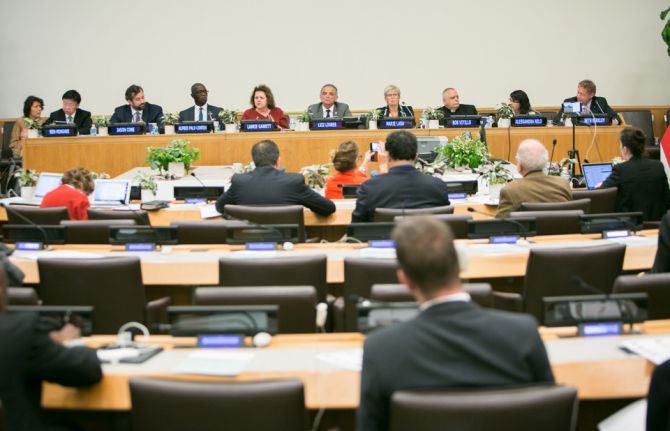
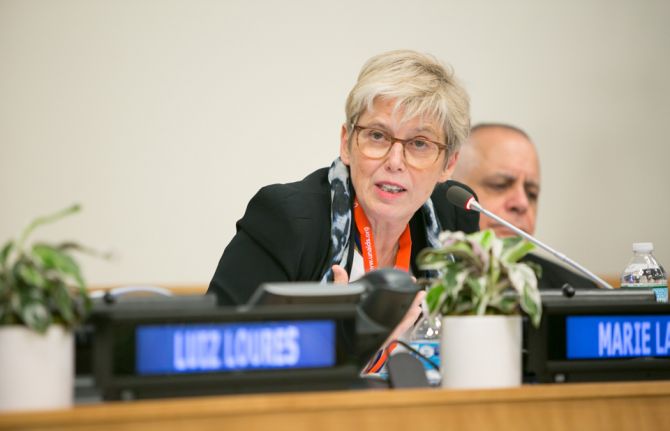
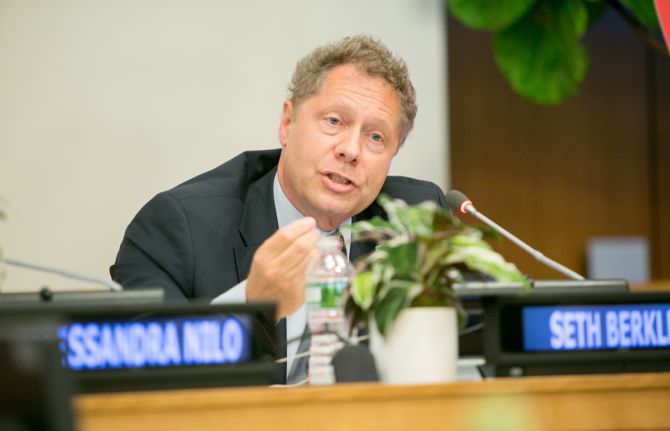
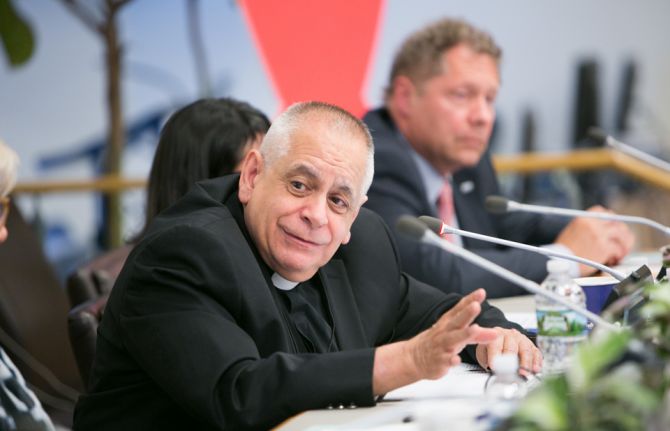
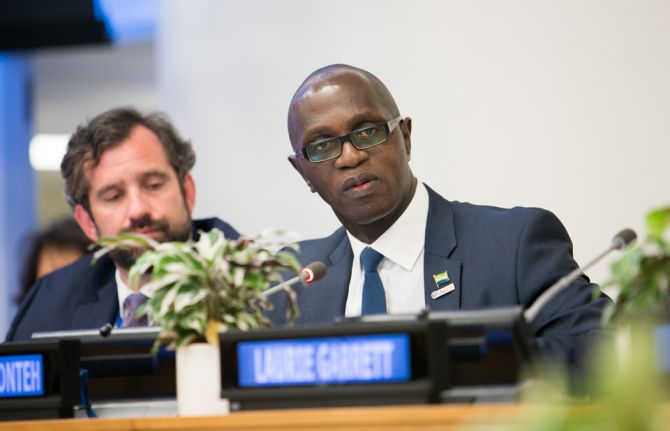
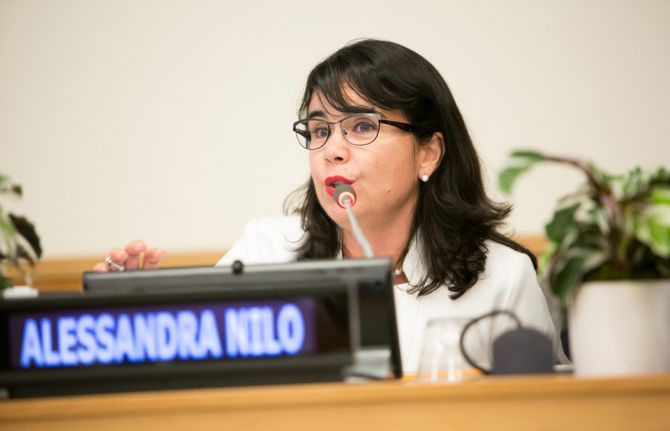
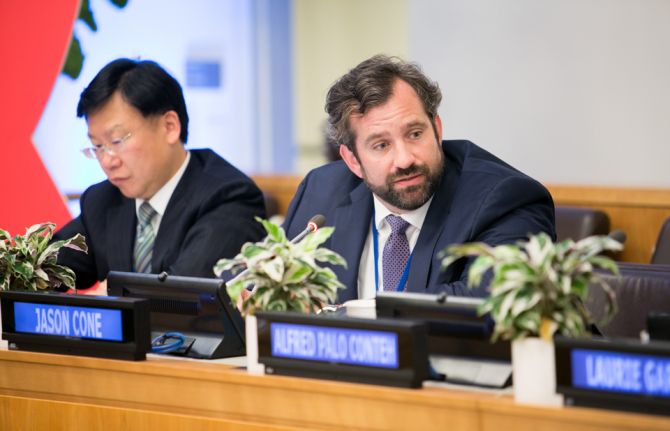
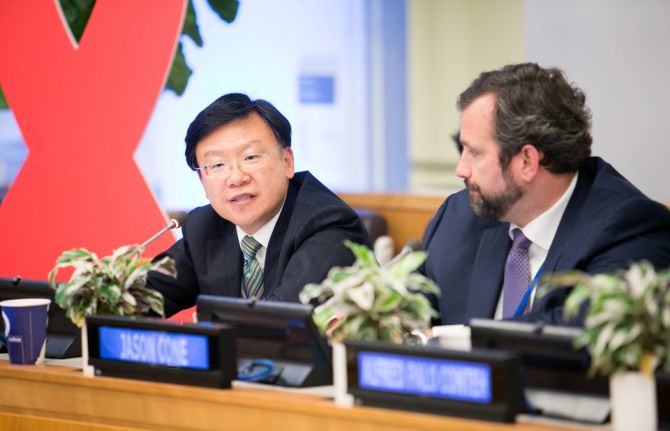
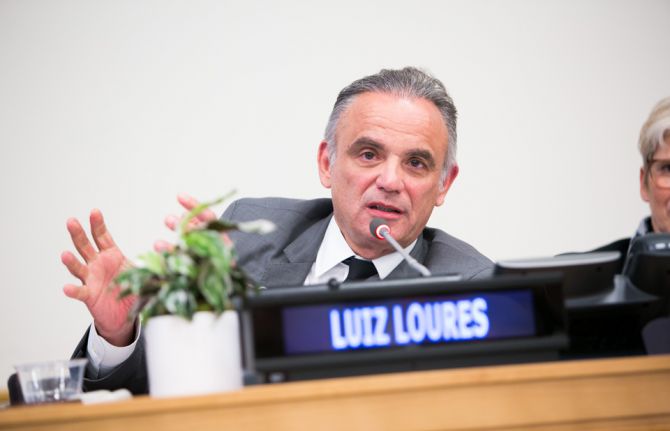
Update
Learning the lessons of responding to emerging epidemics, including AIDS, Ebola and Zika
09 June 2016
09 June 2016 09 June 2016The best ways to respond to emerging epidemics have been outlined by leading policy-makers and health advisers during a side event entitled “Addressing global health emergencies: lessons from AIDS to Ebola, Zika and other emerging epidemics” that took place on 9 June.
Political leadership, the involvement of communities and a joined-up emergency response were highlighted as vital at the side event, which took place on the margins of the United Nations General Assembly High-Level Meeting on Ending AIDS, held from 8 to 10 June in New York, United States of America.
The response to AIDS and, more recently Ebola and Zika, was used as a starting point to explore what lessons could be learned.
The discussion was chaired by Deputy Executive Director of UNAIDS Luiz Loures and moderated by Laurie Garrett of United States think tank the Council on Foreign Relations.
Panellists at the side event included Sierra Leone’s Minister of Internal Affairs, Alfred Palo Conteh, the Executive Director for Gestos, Brazil, Alessandra Nilo, the Executive Director of Doctor Without Borders, Jason Cone, the World Health Organization’s Assistant Director-General for HIV/AIDS, Tuberculosis, Malaria and Neglected Tropical Diseases, Ren Minghui, a professor from the Belgium Institute of Tropical Medicine, Marie Laga, and Monsignor Robert Vitillo, Special Adviser on Health and HIV to relief agency Caritas Internationalis.
The participants discussed how evidence from three decades of responding to HIV proved that responding to issues head-on within communities and engaging people living with HIV were essential.
The many similarities between HIV and outbreaks of Ebola and Zika allowed the participants to explore best practice when dealing with rapidly growing epidemics that are closely linked to poverty, inequality and gender.
The participants also examined how to overcome the fear, stigma and discrimination associated with epidemics so closely linked to sensitive topics, such as death and sexual behaviour.
The recommendations made at the side event included that steps should be taken to understand the cultural context of epidemics and that managing finances at the global level was necessary in order to tackle epidemics.
Other recommendations included integrating sexual, reproductive and human rights imperatives into the response, aligning new capacities to develop timely diagnostics, vaccines and medicines, ensuring that there are sufficiently qualified human resources and developing strong laboratory infrastructure and surveillance systems.
Quotes
“We know we need to go beyond the Political Declaration from earlier this week. What we do now needs to make sense. There’s no way to address AIDS today without working with and learning from the responses to many other emerging diseases.”
“In every single outbreak, we see stigma and we engender disproportionate fear. And yet those patients are the ones who should be embraced, but society shuns them because of their illness.”
“We know it’s an evolutionary certainty to have outbreaks. The question is, is the world prepared for them? Does the world take this seriously? Do we have our priorities right?”
“I think one of the lessons we have failed to learn from other diseases is that guidelines and response plans are often completely divorced from the social and economic realities of those patients that need them the most. But whether it’s AIDS, Ebola, or polio, we need to look hard and focus on how we are going to reach those last-mile communities that we need to.”
“With all due respect to many of the public health experts and governments in the room, but sometimes we speak in a way that is not understood in the best ways for the community. And that dialogue with the community needs to happen earlier. In an emergency, we don’t have time for it.”
“I think what we have learned from Ebola was decentralization. When the local religious leaders spoke, people listened. Community engagement and decentralization are key to fighting these epidemics.”
“Why are we not talking about the state’s responsibility in addressing stigma as a priority, because stigma is never related to just one issue—sexuality, gender, HIV status … layers of stigma come together!”
Related

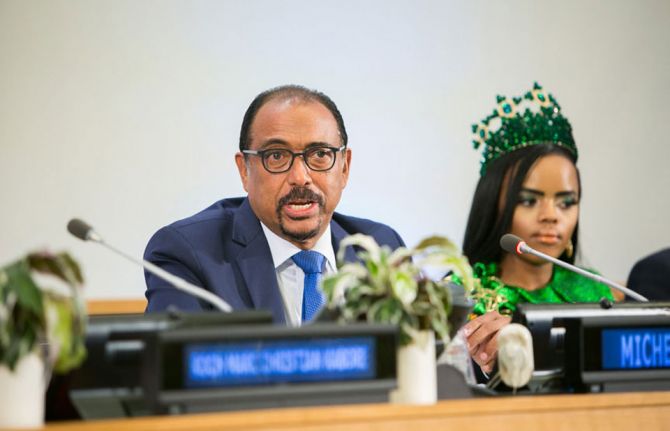
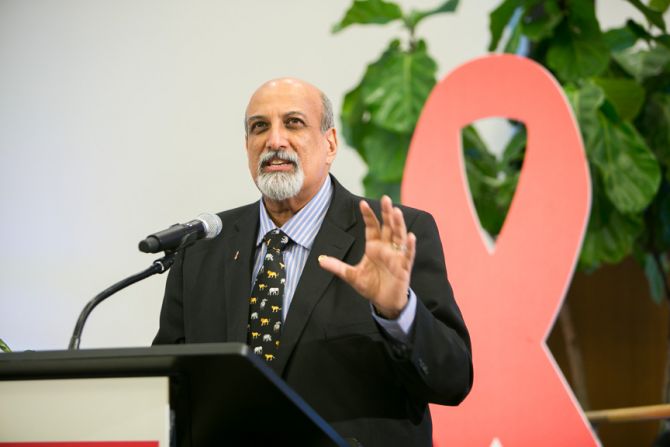
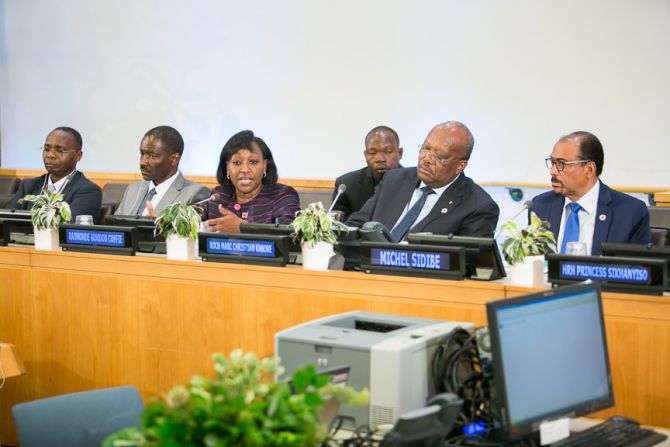

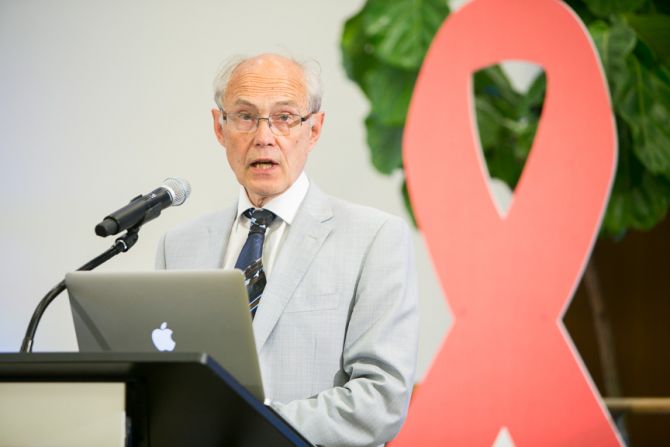
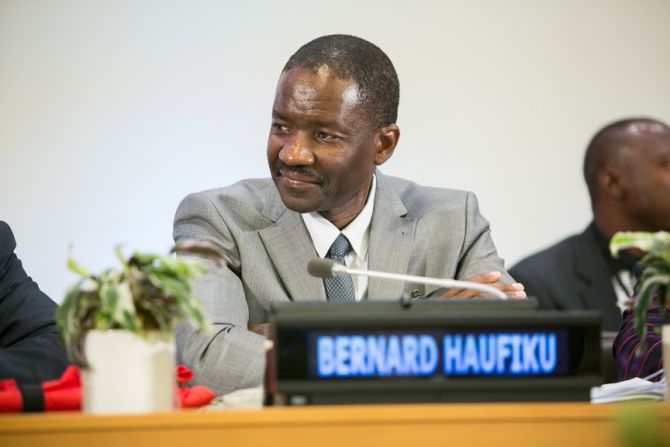
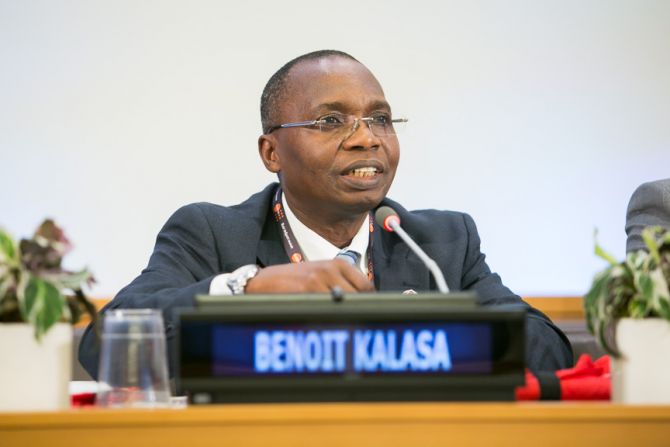
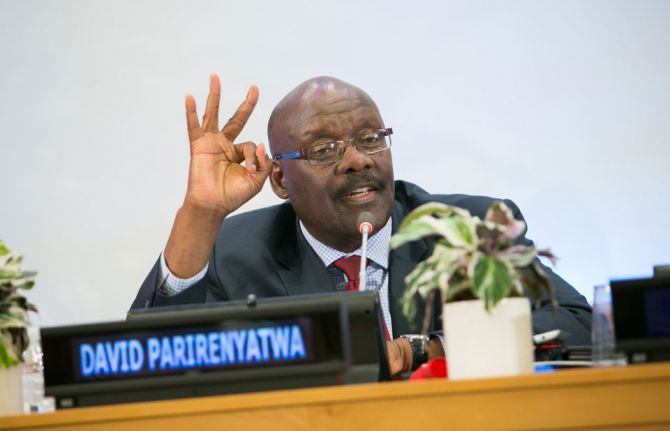
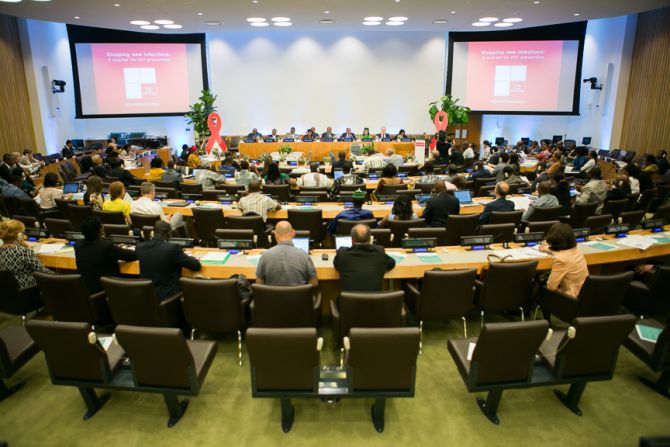
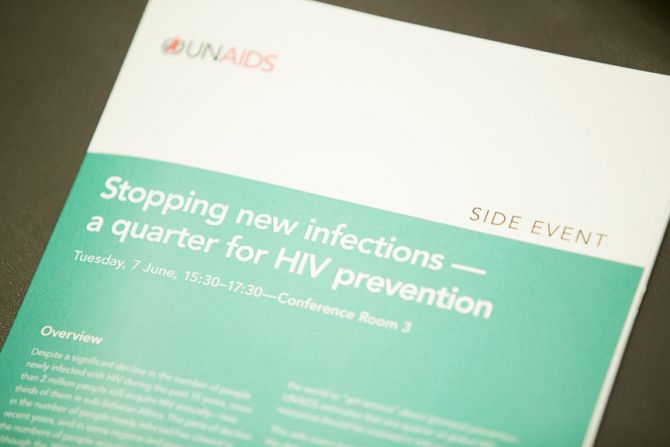
Update
Stopping new infections: a quarter for HIV prevention
07 June 2016
07 June 2016 07 June 2016UNAIDS Executive Director Michel Sidibé has called for combination prevention to be Fast-Tracked and for a thorough examination of investments in HIV prevention. Although HIV resources have grown overall, spending on prevention has not kept pace.
A side event held on the margins of the United Nations General Assembly High-Level Meeting on Ending AIDS, taking place from 8 to 10 June in New York, United States of America, heard that prevention needs to be taken more seriously and how at least a quarter of global HIV resources needed to be invested in prevention. Currently, countries spend as little as 10% on effective prevention methods and programmes.
The participants attending the event, entitled “Stopping new infections: a quarter for HIV prevention,” were told that treatment alone will not end the epidemic.
To reduce the number of people newly infected with HIV globally to the Fast-Track Target of fewer than 500 000 by 2020, towards ending the HIV epidemic as a public health threat by 2030, countries need to Fast-Track HIV combination prevention. However, new adult HIV infections are not declining fast enough to meet those targets.
Although there has been a significant decline in the number of new HIV infections since 2001, recent trends are disappointing. The most recent UNAIDS data released in the Global AIDS update 2016 on 31 May show that the number of new HIV infections has in fact stagnated since the High-Level Meeting on HIV and AIDS, held in 2011.
Increased provision and education around the use of condoms, pre-exposure prophylaxis and voluntary medical male circumcision were encouraged, alongside empowering young people and key populations to enable them to protect themselves.
The meeting, held on 7 June, heard that people have a right to be able to access prevention services. It was noted that investing in HIV prevention and reducing the number of new HIV infections will contribute to the sustainability of HIV treatment.
More than 2 million people are still newly infected with HIV annually, two thirds of whom live in sub-Saharan Africa. New HIV infections are particularly high among adolescent girls and young women in sub-Saharan Africa, with more than 5000 newly infected every week.
Addressing the meeting, Mr Sidibé said there was no magic bullet for HIV prevention—only a combination of behavioural, biomedical and structural programmes and approaches will stop new HIV infections.
Quotes
‘‘We must address the structural factors that exacerbate HIV vulnerability and empower young women and girls."
‘‘UNAIDS Executive Director has called for a quarter of global HIV resources to be invested in effective prevention. In Namibia, we shall invest 3o% in prevention of child and adult infections’.
“This is not just about being serious but also about getting real about HIV prevention. One quarter of global HIV resources will need to be directed to HIV prevention, while maintaining the momentum on treatment expansion’’.
‘‘My message is about the economic and fiscal risks inherent in failing to bring down new infections much faster than we have been seeing. Finance ministries, donors and the international institutions need to understand these risks and take action to address them’’.
‘‘National governments and donors must recommit to making condoms available to all through HIV and sexual and reproductive health services, targeting young people and key populations’’
Related information
Find out more about the #HLM2016AIDS

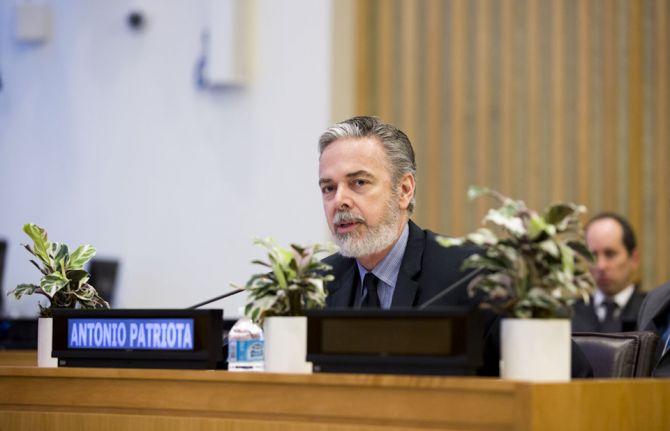
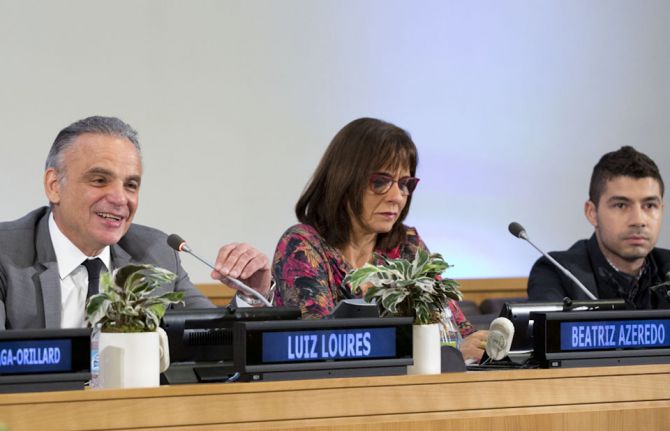
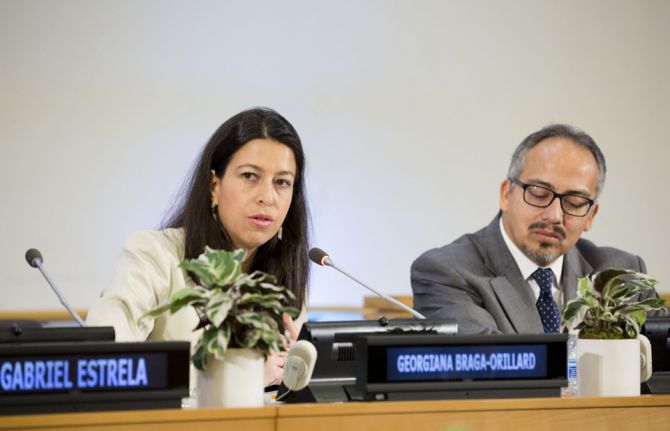
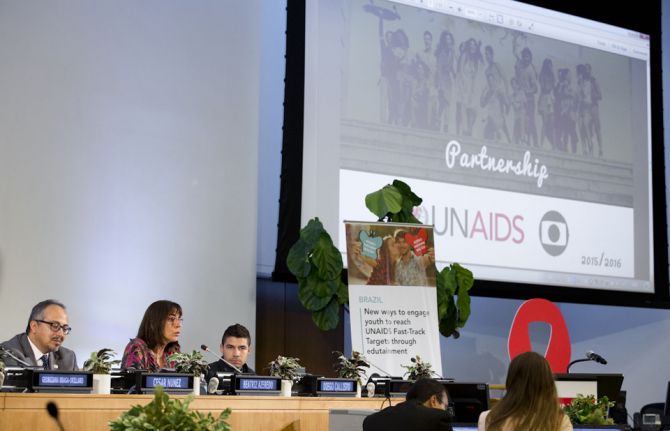
Update
New ways to engage youth to reach the UNAIDS Fast-Track Targets through edutainment
10 June 2016
10 June 2016 10 June 2016Initiatives conducted in partnership with mass media outlets have proved to positively contribute to changing the HIV-related attitudes and behaviours of millions of people at very low cost. Edutainment designs characters and storylines to provide viewers with positive role models to relate to, often at a personal and emotional level.
At a side event on the margins of the United Nations General Assembly High-Level Meeting on Ending AIDS, being held in New York, United States of America, from 8 to 10 June, UNAIDS Brazil, Globo and other partners discussed how television, both web-based and other forms, can help educate people on issues related to living with HIV by focusing on people and not statistics.
Held on 9 June and entitled “New ways to engage youth to reach the UNAIDS Fast-Track Targets through edutainment,” the side event highlighted innovative ways of working with young people in Brazil. In the country, UNAIDS and Globo have started a partnership to reach young people and discuss a variety of issues, from HIV prevention to testing, treatment and the human rights of vulnerable populations and people living with HIV. UNAIDS has also partnered with the Brazilian Government to promote activism and the leadership of young people. Together, the country is implementing new ways to engage young people to reach the UNAIDS Fast-Track Targets.
The global commitment to ending the AIDS epidemic by 2030 will demand increased investment in innovative and creative approaches that are able to Fast-Track the response and reach young people and people left behind. Innovative and creative approaches are needed to reduce stigma around HIV and promote HIV testing, prevention, care and treatment.
At the event, young people from Brazil and Africa gave examples of how they can be engaged in the response to the AIDS epidemic. Alejandra Oraa, from CNN and UNAIDS Regional Goodwill Ambassador for Latin America and the Caribbean, and James Chau, from CCTV and UNAIDS National Goodwill Ambassador for China, spoke about their experiences in working with large media for outreach.
Quotes
“The key to our success in the AIDS response so far has been the engagement and contribution of people living with HIV and vulnerable populations.”
“We now have a strong document—the Political Declaration—to use for the multilateral system to push for youth empowerment.”
“With great outreach power comes great responsibility.”
“I am an actor. I don’t know how to speak about numbers and statistics. But I do know how to talk and reach people through feelings.”
“We can only change behaviour with through empathy. That is why we worked with a group of young people from vulnerable populations to identify gaps.”
“To transform the AIDS response, we need to drive hearts as well as minds.”
“I believe that the media has a huge role to play in the AIDS response to reach people left behind.”
Related
 “Who will protect our young people?”
“Who will protect our young people?”

02 June 2025


